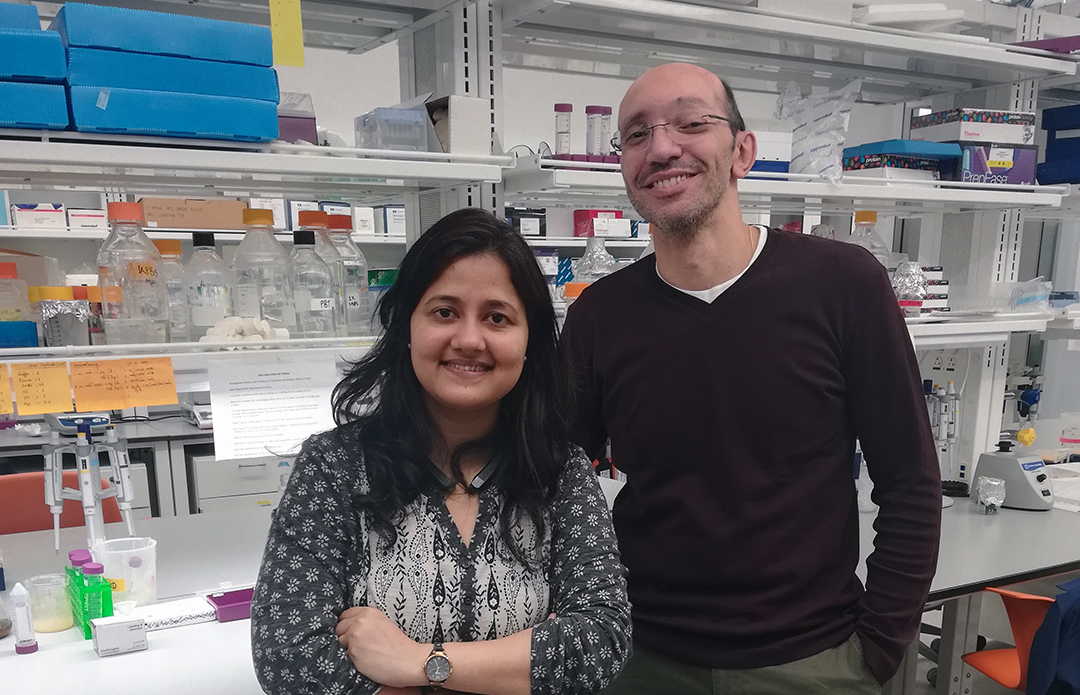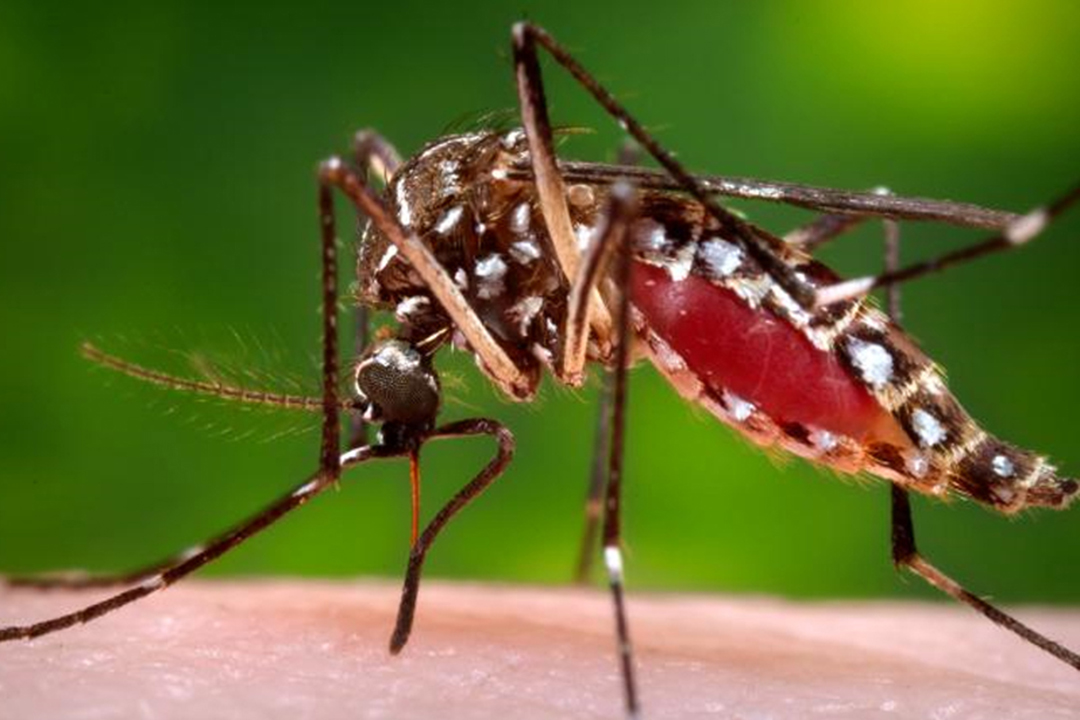By Kristen Mitchell
George Washington University researchers are laying the groundwork for biologists to one day develop a way to stop the Zika virus in its tracks. There is currently no vaccine or medicine for Zika, which is spread primarily through mosquito bites and can cause birth defects.
A team of university researchers recently published a paper on the interactions between Drosophila, a genus of flies more commonly known as fruit flies, and Zika virus in the Journal of Immunology. It is one of the first studies that simulates the innate immune system of the Drosophila model organism to Zika virus infection.
The study was led by Sneh Harsh, a former GW postdoctoral fellow. Co-authors Ioannis Eleftherianos, associate professor of molecular biology in the Columbian College of Arts and Sciences, and Yaprak Ozakman, a Ph.D. candidate, working closely with collaborators from the School of Medicine and Health Sciences. This research was funded through a nearly $350,000 grant from the National Institutes of Health.
Dr. Eleftherianos spoke to GW Today about the new paper and why this is an important step in developing treatment for Zika.
Q: Your research focuses on Zika virus and its interaction with the immune system. What was the most important finding in your recent paper?
A: The most important finding in our paper was that we were able to identify the molecular immune events that take place in a host when responding to Zika virus infection. Also, we were able to identify and characterize the functional changes that accompany the virus (e.g., changes in gut homeostasis, lipid metabolism, locomotion) in flies following infection with Zika virus.
Q: Your lab has been looking at biological pathways activated by the Zika virus. What do these pathways tell us?
A: These innate immunity pathways have evolved in animals to recognize and respond to specific viral infections. One of those pathways is the RNA interference (RNAi) pathway that is triggered in response to RNA viruses (viruses that store genetic information in the form of RNA). Here we have shown for the first time that RNAi is strongly activated by Zika virus infection in Drosophila and mutating specific components of this pathway renders flies sensitive to Zika virus.
Q: Fruit flies and mosquitos are closely related. Why is that important to your research?
A: Our results illustrate the efficacy of Drosophila as model for understanding host–Zika virus interactions. Our findings are important because identifying the genetic basis of the interplay between Drosophila and Zika virus will potentially contribute toward developing efficient strategies for blocking the transmission of Zika virus and possibly other similar viruses by mosquito vectors.
Q: We don’t hear as much about the Zika virus in the news today compared to two years ago. Why is it important that scientists continue to do this work?
A: Zika virus outbreaks have occurred recently in many areas of Southeast Asia and local spreads are reported frequently in many parts of Brazil and other countries of South America. Therefore, it is critical to continue to investigate the molecular mechanisms of Zika virus pathogenicity and their interaction with host innate immune functions. Information gained from this research will advance greatly our understanding of the genetic and physiological processes that determine the outcome of this disease.
Q: What is the next step for your lab?
A: Our next step is to identify other host innate immune pathways and their specific key players that are directed against Zika virus infection. Also, we will use the genetic toolbox available in Drosophila to determine the exact molecular components that contribute to Zika virus pathogenesis.




